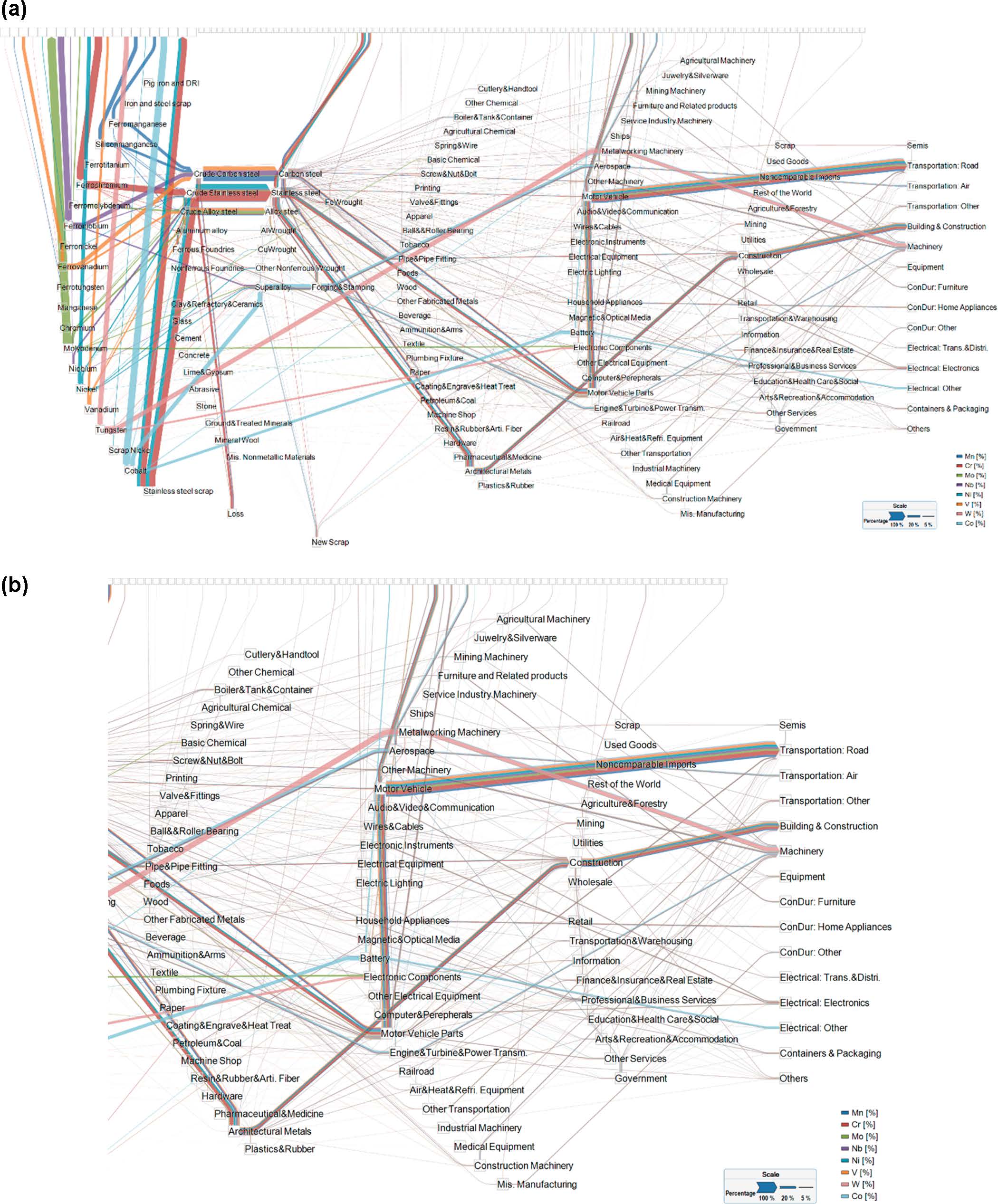Ohno, Hajime*; Nuss, Philip; Chen, Wei-Qiang*; Graedel, Thomas E.
Environmental Science & Technology 2016 50 (7), 4082–4090. DOI: 10.1021/acs.est.5b05093
Abstract
Metals have strongly contributed to the development of the human society. Today, large amounts of and various metals are utilized in a wide variety of products. Metals are rarely used individually but mostly together with other metals in the form of alloys and/or other combinational uses. This study reveals the intersectoral flows of metals by means of input-output (IO) based material flow analysis (MFA). Using the 2007 United States IO table, we calculate the flows of eight metals (i.e., manganese, chromium, nickel, molybdenum, niobium, vanadium, tungsten, and cobalt) and simultaneously visualize them as a network. We quantify the interrelationship of metals by means of flow path sharing. Furthermore, by looking at the flows of alloys into metal networks, the networks of the major metals iron, aluminum, and copper together with those of the eight alloying metals can be categorized into alloyed-, nonalloyed-(i.e., individual), and both mixed. The result shows that most metals are used primarily in alloy form and that functional recycling thereby requires identification, separation, and alloy-specific reprocessing if the physical properties of the alloys are to be retained for subsequent use. The quantified interrelation of metals helps us consider better metal uses and develop a sustainable cycle of metals.
Cobalt input-output network for the United States, 2007.

(a) Networks of eight metals commonly used in alloys in the U.S. economy, 2007. Colors represent the individual metals; arrow widths represent edge weights; (b) Expanded view of (a) to show detail in the Motor Vehicle and Construction sectors.
